
15 The Wyoming State Capitol, located in Cheyenne, has a rich history that dates back to the late 19th century. The building's construction began in 1886, a year before Wyoming became a territory, and was completed in 1890, just in time for Wyoming's admission as the 44th state of the Union. The Capitol was designed by architect David W. Gibbs, who modeled it after the United States Capitol in Washington, D.C. This grand building was initially constructed using sandstone sourced from nearby quarries in Rawlins, Wyoming. The construction process was marked by meticulous attention to detail, reflecting the aspirations of the new state. The building served as a symbol of Wyoming’s commitment to governance and democracy.
Architecturally, the Wyoming State Capitol stands out for its Renaissance Revival style, characterized by its symmetry, classic proportions, and use of columns and pilasters. The central feature of the Capitol is its majestic gold leaf dome, which rises 146 feet above the ground and serves as a prominent landmark in Cheyenne. The interior is equally impressive, adorned with decorative elements such as stained glass, marble floors, and intricate woodwork. The building's layout includes a grand central rotunda, legislative chambers, and offices for the governor and other state officials. Over the years, the Capitol has undergone several renovations and expansions to accommodate the growing needs of the state government while preserving its historical and architectural integrity.
Architecturally, the Wyoming State Capitol stands out for its Renaissance Revival style, characterized by its symmetry, classic proportions, and use of columns and pilasters. The central feature of the Capitol is its majestic gold leaf dome, which rises 146 feet above the ground and serves as a prominent landmark in Cheyenne. The interior is equally impressive, adorned with decorative elements such as stained glass, marble floors, and intricate woodwork. The building's layout includes a grand central rotunda, legislative chambers, and offices for the governor and other state officials. Over the years, the Capitol has undergone several renovations and expansions to accommodate the growing needs of the state government while preserving its historical and architectural integrity.
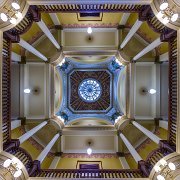
16 The Wyoming State Capitol, located in Cheyenne, has a rich history that dates back to the late 19th century. The building's construction began in 1886, a year before Wyoming became a territory, and was completed in 1890, just in time for Wyoming's admission as the 44th state of the Union. The Capitol was designed by architect David W. Gibbs, who modeled it after the United States Capitol in Washington, D.C. This grand building was initially constructed using sandstone sourced from nearby quarries in Rawlins, Wyoming. The construction process was marked by meticulous attention to detail, reflecting the aspirations of the new state. The building served as a symbol of Wyoming’s commitment to governance and democracy.
Architecturally, the Wyoming State Capitol stands out for its Renaissance Revival style, characterized by its symmetry, classic proportions, and use of columns and pilasters. The central feature of the Capitol is its majestic gold leaf dome, which rises 146 feet above the ground and serves as a prominent landmark in Cheyenne. The interior is equally impressive, adorned with decorative elements such as stained glass, marble floors, and intricate woodwork. The building's layout includes a grand central rotunda, legislative chambers, and offices for the governor and other state officials. Over the years, the Capitol has undergone several renovations and expansions to accommodate the growing needs of the state government while preserving its historical and architectural integrity.
Architecturally, the Wyoming State Capitol stands out for its Renaissance Revival style, characterized by its symmetry, classic proportions, and use of columns and pilasters. The central feature of the Capitol is its majestic gold leaf dome, which rises 146 feet above the ground and serves as a prominent landmark in Cheyenne. The interior is equally impressive, adorned with decorative elements such as stained glass, marble floors, and intricate woodwork. The building's layout includes a grand central rotunda, legislative chambers, and offices for the governor and other state officials. Over the years, the Capitol has undergone several renovations and expansions to accommodate the growing needs of the state government while preserving its historical and architectural integrity.

17 The Wyoming State Capitol, located in Cheyenne, has a rich history that dates back to the late 19th century. The building's construction began in 1886, a year before Wyoming became a territory, and was completed in 1890, just in time for Wyoming's admission as the 44th state of the Union. The Capitol was designed by architect David W. Gibbs, who modeled it after the United States Capitol in Washington, D.C. This grand building was initially constructed using sandstone sourced from nearby quarries in Rawlins, Wyoming. The construction process was marked by meticulous attention to detail, reflecting the aspirations of the new state. The building served as a symbol of Wyoming’s commitment to governance and democracy.
Architecturally, the Wyoming State Capitol stands out for its Renaissance Revival style, characterized by its symmetry, classic proportions, and use of columns and pilasters. The central feature of the Capitol is its majestic gold leaf dome, which rises 146 feet above the ground and serves as a prominent landmark in Cheyenne. The interior is equally impressive, adorned with decorative elements such as stained glass, marble floors, and intricate woodwork. The building's layout includes a grand central rotunda, legislative chambers, and offices for the governor and other state officials. Over the years, the Capitol has undergone several renovations and expansions to accommodate the growing needs of the state government while preserving its historical and architectural integrity.
Architecturally, the Wyoming State Capitol stands out for its Renaissance Revival style, characterized by its symmetry, classic proportions, and use of columns and pilasters. The central feature of the Capitol is its majestic gold leaf dome, which rises 146 feet above the ground and serves as a prominent landmark in Cheyenne. The interior is equally impressive, adorned with decorative elements such as stained glass, marble floors, and intricate woodwork. The building's layout includes a grand central rotunda, legislative chambers, and offices for the governor and other state officials. Over the years, the Capitol has undergone several renovations and expansions to accommodate the growing needs of the state government while preserving its historical and architectural integrity.
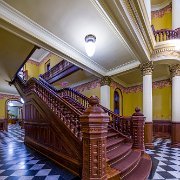
18 The Wyoming State Capitol, located in Cheyenne, has a rich history that dates back to the late 19th century. The building's construction began in 1886, a year before Wyoming became a territory, and was completed in 1890, just in time for Wyoming's admission as the 44th state of the Union. The Capitol was designed by architect David W. Gibbs, who modeled it after the United States Capitol in Washington, D.C. This grand building was initially constructed using sandstone sourced from nearby quarries in Rawlins, Wyoming. The construction process was marked by meticulous attention to detail, reflecting the aspirations of the new state. The building served as a symbol of Wyoming’s commitment to governance and democracy.
Architecturally, the Wyoming State Capitol stands out for its Renaissance Revival style, characterized by its symmetry, classic proportions, and use of columns and pilasters. The central feature of the Capitol is its majestic gold leaf dome, which rises 146 feet above the ground and serves as a prominent landmark in Cheyenne. The interior is equally impressive, adorned with decorative elements such as stained glass, marble floors, and intricate woodwork. The building's layout includes a grand central rotunda, legislative chambers, and offices for the governor and other state officials. Over the years, the Capitol has undergone several renovations and expansions to accommodate the growing needs of the state government while preserving its historical and architectural integrity.
Architecturally, the Wyoming State Capitol stands out for its Renaissance Revival style, characterized by its symmetry, classic proportions, and use of columns and pilasters. The central feature of the Capitol is its majestic gold leaf dome, which rises 146 feet above the ground and serves as a prominent landmark in Cheyenne. The interior is equally impressive, adorned with decorative elements such as stained glass, marble floors, and intricate woodwork. The building's layout includes a grand central rotunda, legislative chambers, and offices for the governor and other state officials. Over the years, the Capitol has undergone several renovations and expansions to accommodate the growing needs of the state government while preserving its historical and architectural integrity.
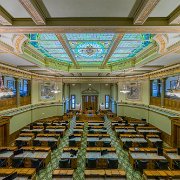
19 The Wyoming State Capitol, located in Cheyenne, has a rich history that dates back to the late 19th century. The building's construction began in 1886, a year before Wyoming became a territory, and was completed in 1890, just in time for Wyoming's admission as the 44th state of the Union. The Capitol was designed by architect David W. Gibbs, who modeled it after the United States Capitol in Washington, D.C. This grand building was initially constructed using sandstone sourced from nearby quarries in Rawlins, Wyoming. The construction process was marked by meticulous attention to detail, reflecting the aspirations of the new state. The building served as a symbol of Wyoming’s commitment to governance and democracy.
Architecturally, the Wyoming State Capitol stands out for its Renaissance Revival style, characterized by its symmetry, classic proportions, and use of columns and pilasters. The central feature of the Capitol is its majestic gold leaf dome, which rises 146 feet above the ground and serves as a prominent landmark in Cheyenne. The interior is equally impressive, adorned with decorative elements such as stained glass, marble floors, and intricate woodwork. The building's layout includes a grand central rotunda, legislative chambers, and offices for the governor and other state officials. Over the years, the Capitol has undergone several renovations and expansions to accommodate the growing needs of the state government while preserving its historical and architectural integrity.
Architecturally, the Wyoming State Capitol stands out for its Renaissance Revival style, characterized by its symmetry, classic proportions, and use of columns and pilasters. The central feature of the Capitol is its majestic gold leaf dome, which rises 146 feet above the ground and serves as a prominent landmark in Cheyenne. The interior is equally impressive, adorned with decorative elements such as stained glass, marble floors, and intricate woodwork. The building's layout includes a grand central rotunda, legislative chambers, and offices for the governor and other state officials. Over the years, the Capitol has undergone several renovations and expansions to accommodate the growing needs of the state government while preserving its historical and architectural integrity.
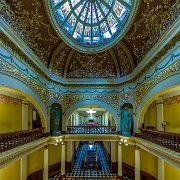
20 The Wyoming State Capitol, located in Cheyenne, has a rich history that dates back to the late 19th century. The building's construction began in 1886, a year before Wyoming became a territory, and was completed in 1890, just in time for Wyoming's admission as the 44th state of the Union. The Capitol was designed by architect David W. Gibbs, who modeled it after the United States Capitol in Washington, D.C. This grand building was initially constructed using sandstone sourced from nearby quarries in Rawlins, Wyoming. The construction process was marked by meticulous attention to detail, reflecting the aspirations of the new state. The building served as a symbol of Wyoming’s commitment to governance and democracy.
Architecturally, the Wyoming State Capitol stands out for its Renaissance Revival style, characterized by its symmetry, classic proportions, and use of columns and pilasters. The central feature of the Capitol is its majestic gold leaf dome, which rises 146 feet above the ground and serves as a prominent landmark in Cheyenne. The interior is equally impressive, adorned with decorative elements such as stained glass, marble floors, and intricate woodwork. The building's layout includes a grand central rotunda, legislative chambers, and offices for the governor and other state officials. Over the years, the Capitol has undergone several renovations and expansions to accommodate the growing needs of the state government while preserving its historical and architectural integrity.
Architecturally, the Wyoming State Capitol stands out for its Renaissance Revival style, characterized by its symmetry, classic proportions, and use of columns and pilasters. The central feature of the Capitol is its majestic gold leaf dome, which rises 146 feet above the ground and serves as a prominent landmark in Cheyenne. The interior is equally impressive, adorned with decorative elements such as stained glass, marble floors, and intricate woodwork. The building's layout includes a grand central rotunda, legislative chambers, and offices for the governor and other state officials. Over the years, the Capitol has undergone several renovations and expansions to accommodate the growing needs of the state government while preserving its historical and architectural integrity.
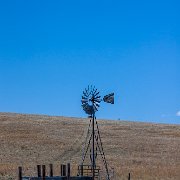
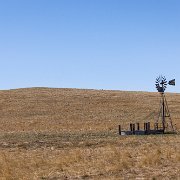
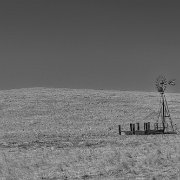
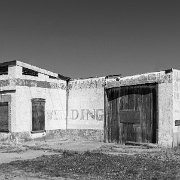


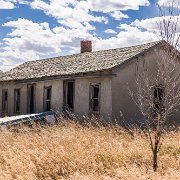


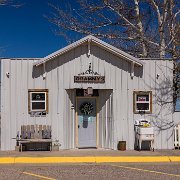
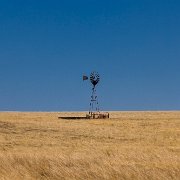

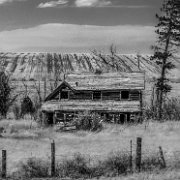
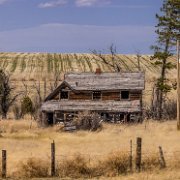
Wyoming